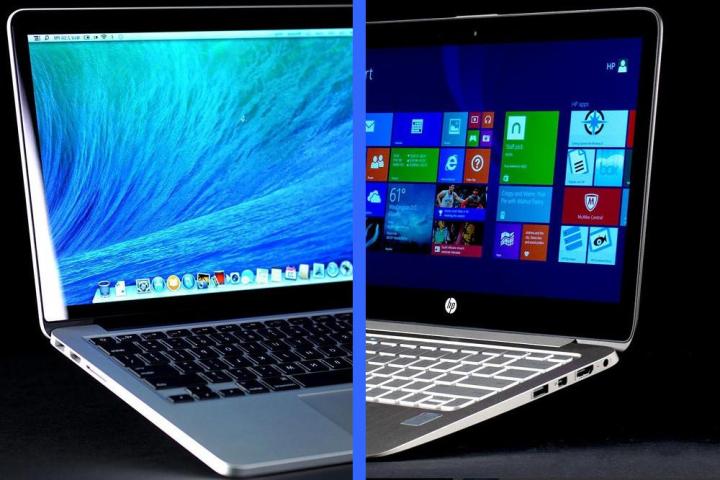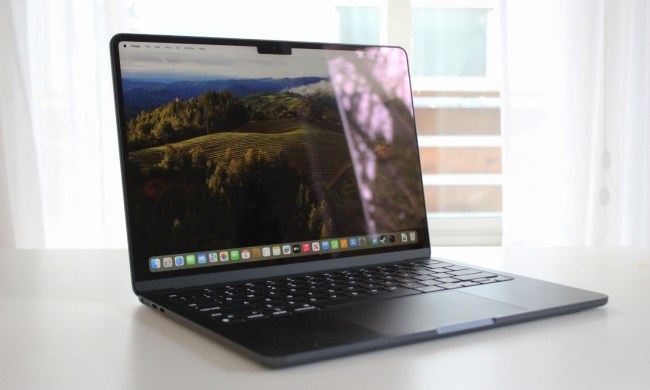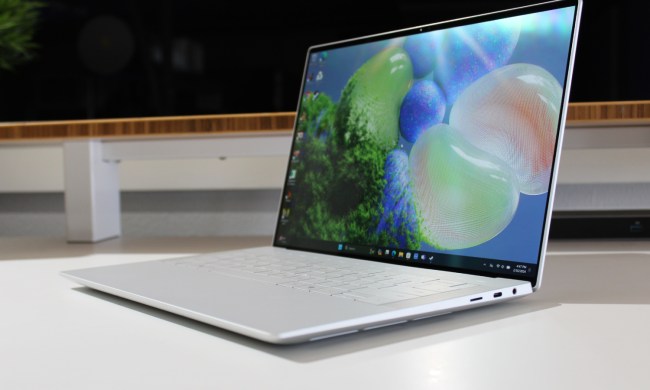
HP’s decision to buy boutique PC maker Voodoo in late 2006 was a declaration of war on Apple, which had just raised the bar on premium laptop quality with its new MacBook Pro. In 2007, the Voodoo Envy hit the market (to mixed reception), and it was followed by a long line of increasingly awesome Envy-branded systems which emulated and improved on the formula Cupertino created.
And then, to our horror, development of Envy just kinda stopped. Most of the excellent high-end models were discontinued and the brand was used to market far less expensive products. HP put the brakes on its premium laptops just as competitors slammed on the gas.
There is, however, a new hope; HP’s Spectre 13t. Though it lacks the Envy name, this is the company’s most expensive consumer ultrabook, and it’s meant to carry on the fight against Zenbooks, MacBooks, IdeaPads and the like. The Spectre’s price of $999 is quite low, however –- so can affordable luxury really stand up to Apple’s MacBook Pro 13 with Retina?
Design & Features
The Spectre 13t, at just 15 millimeters thick and about 3.2 pounds, is closer in size and weight to the MacBook Air 13 than the MacBook Pro 13 with Retina. That’s not to say that the Pro needs to get on a treadmill, but the difference is easy to notice even at first touch. There are some flaws in the Spectre’s fit-and-finish that aren’t found in the Pro, like a slightly flexible palm rest and a less sturdy display lid, but you’ll need to go looking for these problems to notice them.
Apple wins in keyboard quality, as the MacBook provides more travel, superior tactile feel and better backlighting. The touchpads, however, are evenly matched. Apple’s laptop of course features a large, smooth surface, and Mac OS X has better support for multi-touch gestures. But the HP offers a uniquely wide surface that’s textured on the edges to provide tactile feedback for some of the new gestures found in Windows 8. This, combined with the Spectre’s standard touchscreen, makes navigating the HP a breeze.

The connectivity crown also goes to the Pro, as the Spectre only provides a pair of USB 3.0 ports along with HDMI, DisplayPort, audio-out and a card reader. The MacBook offers the same number of USB ports along with two flexible and super-fast Thunderbolt ports, plus HDMI, audio-out and a card reader. Both laptops lack Ethernet but support 802.11ac Wi-Fi.
Performance
These laptops come standard with a 4th-gen Core i5 processor, but the Apple MacBook Pro outruns the HP with ease. This has less to do with the Pro’s over-achievement than the Spectre’s below-average performance. In the 7-zip file compression test, for example, the Spectre only scores 4,604 MIPS. Most competitors manage to score at least 6,000 and some vault over 7,000.
The story is the same for 3D performance, where the HP’s Intel HD 4600 graphics can’t hope to keep pace with the MacBook’s more powerful Intel Iris hardware. Storage performance is similar, however; while we can’t test Apple’s laptop using the same software we did with the HP because they don’t run the same operating system, both systems score well in their respective storage benchmarks.
Display

Obviously, Apple is going to win this contest, because its 2560 x 1600 panel is the MacBook’s most important and impressive feature. The Retina display has excellent contrast, high maximum brightness, and good color accuracy along with the buttery-smooth appearance its high resolution provides.
But the HP is no slouch. Though it offers fewer pixels, its 1080p panel still looks sharp, and also scored well in our testing. And, in subjective terms, the Spectre 13t looks even better than its numbers suggest. This is because it offers very deep black levels, a trait that helps the laptop reproduce dark scenes with a realistic sense of depth. The HP’s screen supports touch, too, a feature Apple has yet to embrace.
HP also offers a 2560 x 1440 screen for just $70 over the base model. We can’t definitively comment on its quality because our review unit did not have this upgrade, but it’s likely just as good as the standard 1080p panel, and it may put the Spectre 13t on nearly even ground with Apple’s Retina display.
Storage
Both the Spectre and the MacBook ship with a standard 128GB solid state drive. HP’s laptop can be upgraded to a 256GB drive for $150 but doesn’t offer any larger capacity.
Apple, meanwhile, doesn’t sell storage upgrades as an option. Instead you have to step up to the mid-range model, which is $200 more than the base, but also tacks on an extra four gigabytes of RAM. A 512GB model is available for $500 more than the base, and adds both the extra RAM and a faster processor.
While each unit’s storage options may seem even, remember that the Spectre 13t starts at $999, while the MacBook Pro is at least $1,299. You can grab a 256GB Spectre for less than the base Pro. Clearly, HP offers more storage for your dollar.
Portability
Though these laptops rely on built-in batteries that can’t be easily removed, there is a sizable difference in capacity. The smaller, lighter HP comes with a 4-cell unit we estimate is good for 45 to 50 watt-hours (the exact figure has not been released) while Apple’s Pro has a massive 71.8 watt-hour battery.

This means the MacBook lasts longer, but the scale of its advantage depends on how you use it. At idle or near-idle loads, like when working on a Word document, the Pro’s twenty hours of life squashes the Spectre’s nine and a half hours of endurance. In the Peacekeeper web browsing benchmark, however, the MacBook lasted just fifteen minutes more than the Spectre’s six hours and six minutes of run time.
Apple’s laptop can last considerably longer, but it may not in certain conditions, and the Pro is both thicker and heavier than its rival. We’ll call this one a tie.
Price & Conclusion
There’s no doubt that the MacBook Pro with Retina is superior to the HP Spectre 13t. Apple’s champion has a better display, faster hardware and a larger battery, and it consequently wins in the crucial arenas of image quality, performance and endurance.
However, consumers have to hand over hard-earned money for them, so the $300 price gap between the Pro and Spectre must be taken into consideration as well. A reasonable argument can be made that while HP’s notebook is not as good, the fact that it’s $300 less than the Macbook Pro 13 with Retina makes it a better buy.
Ultimately, the choice comes down to the size of your budget. Buyers who can easily afford a $1,300 notebook should probably go for the Pro, but those who want maximum value will find the Spectre 13t to be a better choice.


